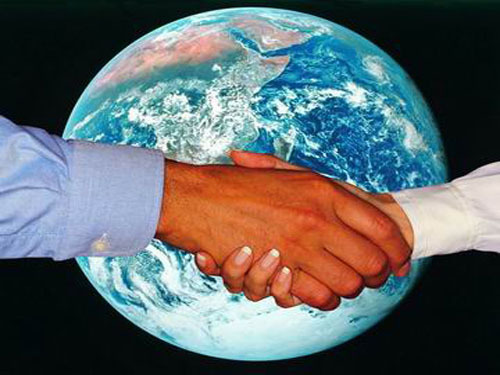The weak recovery of the global economy has become the new normal

Equivalent exchange is the endogenous law of the evolution of the universe, and the economy is no exception. In the midst of a century-long financial crisis, the global economy appears to be redeemed by stimulus policies, but this short-term salvation comes with a price, namely, a longer-term growth of the central government and a prolonged period of crisis. In the third regular update of the World Economic Outlook (WEO) announced this year, the IMF once again demonstrated relative pessimism as a "forceless necessity", confirming the fickleness and costly recovery after the crisis.
Combined with the latest data and years of experience in studying the WEO database, there are three trends behind the July update: First, weak recovery has become the core feature. In the July 2014 update, the IMF lowered its global economic growth rate by 0.3 percentage points from the April forecast to 3.4%, which is the 10th time that the IMF lowered its expectations in the past 11 regular updates. From the absolute and relative perspectives, 3.4% are weaker, both weaker than the 3.6% trend level in 2011-2013 and also weaker than the market expectation level; from the two dimensions of total volume and structure, due to this expectation With the adjustment of statistical methods, the adjustment rate of 0.3 percentage points actually underestimates the overall magnitude of the global economic downturn. Weak recovery has become a core feature of the global economic recovery.
Second, the diversification tide has not ended. Diversification is the global consensus formed after the crisis broke out, that is, the developed countries are down and the emerging markets are up. However, the consensus is only a vision. Since 2012, the U.S. economy has experienced a strong recovery and the rise of emerging markets has been blocked. From the anticipated update in July 2014, the tide of diversification has become a medium-term trend and will continue in the future. Although on the one hand, the IMF has lowered the growth expectations of both developed and emerging markets in 2014, the impact is quite different. It is expected that the post-adjusted growth rate of 1.8% in 2014 will be higher than in 2013; however, the emerging market will have a 4.6% economy. The growth rate was lower than that of 2013, and it showed a declining trend for four consecutive years. On the other hand, while the IMF lowered its forecast for economic growth in emerging markets by 0.1% in 2015, it also raised the economic growth of developed countries in 2015 by 0.1%. It is worth emphasizing that the overall trend of diversification ebb has not changed, but its structural connotation has changed. In July 2014, the IMF lowered its forecast for US economic growth in 2014 by 1.1 percentage points, but put the German, British and Japanese economies into economic Growth expectations are revised up by 0.2, 0.4 and 0.3 percentage points respectively; while Russia, China, Brazil and South Africa are lowered by 1.1, 0.2, 0.6 and 0.6 percentage points respectively.
Third, the retreat of globalization has emerged. In July, the IMF reduced the growth rate of world trade in 2014 by 0.3% to 4%, and the growth rate of emerging market trade was reduced by 0.3% to 4.7%. At the same time, in the main report, the IMF repeatedly emphasized the danger of rising geopolitical risks and the resistance to globalization has increased significantly.
It is worth noting that the three characteristics of the global economic recovery are related to each other: As emerging markets are the main engine of global economic growth in recent years, the diversification tide has weakened the core motivation of recovery; as globalization is conducive to the optimal allocation of resources worldwide, The ebb tide of globalization will also drag on the recovery. In other words, under the combined effects of diversification and globalization, it is difficult for the global economy to quickly emerge from the gloom of the crisis, and the weak recovery is becoming a “new normalâ€.
Under the “new normal†for a weak recovery of the global economy, endogenous harmony has been broken, and differences have led to policy differentiation, and the overall “internal vision†of national policies has been quietly increasing. The game of national interests is bound to be fierce. The key to China’s current efforts to accelerate structural adjustment and expand reform dividends. At the same time, after the IMF adjusted its purchasing power parity statistics method in July, the world share of the U.S. economy fell from 19.1% to 16.5% in 2013, and China rose from 15.5% to 15.9%. This will provide an excuse for China to surpass U.S. theory. This needs to be vigilant.
The Infrared Heater is very easy to install, and once installed, the heater will very strong and not easy to break. Our warranty is 5 years, however, the Panel Heater can use more than 50 years.
The heater has many advantage, like good to human body, no pullotion, no noise, and no danger at all.
You can choose any pattern you like or choose the pattern we support.
Radiant Heater,Infrared Radiant Heaters,Radiant Infrared Heater,Radiant Far Infrared Heater
Shandong Dexiang Electrical Technology Co.,Ltd , http://www.infraredroomheater.com